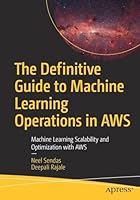
TensorFlow For Dummies
- Length: 360 pages
- Edition: 1
- Language: English
- Publisher: For Dummies
- Publication Date: 2018-04-03
- ISBN-10: 1119466210
- ISBN-13: 9781119466215
- Sales Rank: #374182 (See Top 100 Books)
Become a machine learning pro!
Google TensorFlow has become the darling of financial firms and research organizations, but the technology can be intimidating and the learning curve is steep. Luckily, TensorFlow For Dummies is here to offer you a friendly, easy-to-follow book on the subject. Inside, you’ll find out how to write applications with TensorFlow, while also grasping the concepts underlying machine learning—all without ever losing your cool!
Machine learning has become ubiquitous in modern society, and its applications include language translation, robotics, handwriting analysis, financial prediction, and image recognition. TensorFlow is Google’s preeminent toolset for machine learning, and this hands-on guide makes it easy to understand, even for those without a background in artificial intelligence.
- Install TensorFlow on your computer
- Learn the fundamentals of statistical regression and neural networks
- Visualize the machine learning process with TensorBoard
- Perform image recognition with convolutional neural networks (CNNs)
- Analyze sequential data with recurrent neural networks (RNNs)
- Execute TensorFlow on mobile devices and the Google Cloud Platform (GCP)
If you’re a manager or software developer looking to use TensorFlow for machine learning, this is the book you’ll want to have close by.
Table of Contents
Part 1: Getting to Know TensorFlow
Chapter 1: Introducing Machine Learning with TensorFlow
Chapter 2: Getting Your Feet Wet
Chapter 3: Creating Tensors and Operations
Chapter 4: Executing Graphs in Sessions
Chapter 5: Training
Part 2: Implementing Machine Learning
Chapter 6: Analyzing Data with Statistical Regression
Chapter 7: Introducing Neural Networks and Deep Learning
Chapter 8: Classifying Images with Convolutional Neural Networks (CNNs)
Chapter 9: Analyzing Sequential Data with Recurrent Neural Networks (RNNs)
Part 3: Simplifying and Accelerating TensorFlow
Chapter 10: Accessing Data with Datasets and Iterators
Chapter 11: Using Threads, Devices, and Clusters
Chapter 12: Developing Applications with Estimators
Chapter 13: Running Applications on the Google Cloud Platform (GCP)
Part 4: The Part of Tens
Chapter 14: The Ten Most Important Classes
Chapter 15: Ten Recommendations for Training Neural Networks







